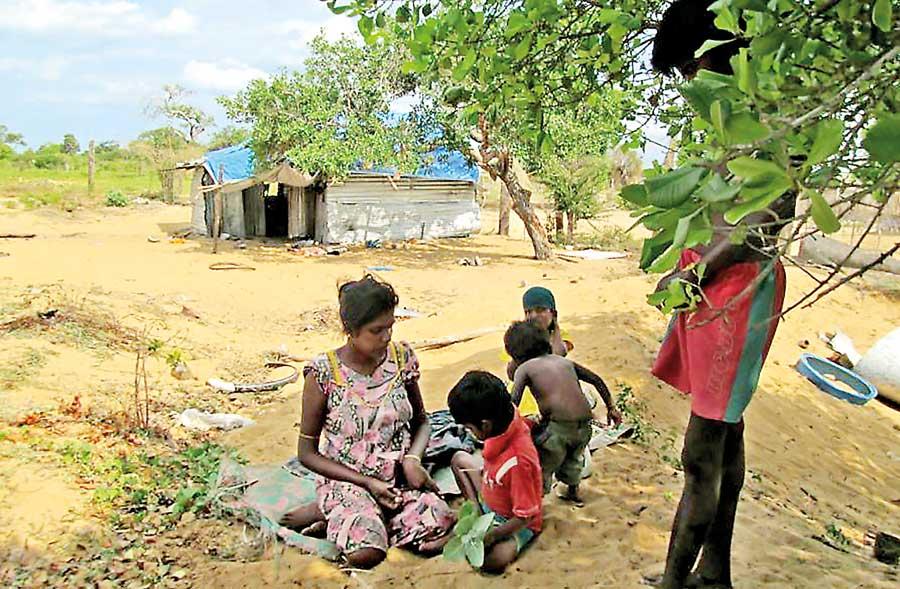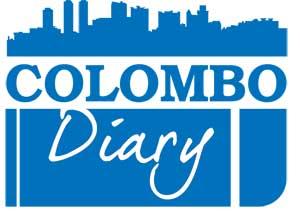20 Aug 2021 - {{hitsCtrl.values.hits}}
Attempts by IOT leaders to speak up for them fail due to an identity crisis

A few in Sri Lanka are aware that a substantial part of the population of the Wanni region in North Sri Lanka, comprising the districts of Vavuniya, Kilinochchi, Mullaitivu and Mannar, are Indian Origin Tamils (IOTs). Estimates of their number vary from 135,000 to 200,000.
comprising the districts of Vavuniya, Kilinochchi, Mullaitivu and Mannar, are Indian Origin Tamils (IOTs). Estimates of their number vary from 135,000 to 200,000.
Since Wanni was the main theatre of the war from 1995 to 2009 after the fall of Jaffna to government forces in 1995, the IOTs were the ones who (predominantly) bore the brunt of the war. The Colombo-based lOT leader Mano Ganeshan pointed out that the IOTs were the ones who got recruited to the LTTE, at times forcibly. They were the ones who were displaced multiple times due to the military operations conducted between 1997 and 2009. They were the “human shield”of the LTTE during the last phase of the war in 2006-2009. They were the ones who were boxed into a narrow space in Mulliwaikkal and forced to face the worst in the final phase. And finally, they were the ones who were interned in the rehabilitation camps after the war.
The IOTs of the Wanni developed close links with the LTTE after its leadership and cadres migrated to the region following their withdrawal from Jaffna. Ganeshan says that many IOT boys and girls joined the armed struggle, voluntarily in the earlier stages, but forcibly recruited in the later stages when the LTTE was short of manpower. While the more prosperous and educated indigenous Lankan Tamils were able to migrate to other countries or re-locate themselves in Colombo and the Western Province to avoid facing shells and bombs, the less educated and less endowed IOTs were left behind in the Wanni to face the music.
 According to Ganeshan, the IOTs constituted 50% of the LTTE leader Prabhakaran’s bodyguard. The IOTs had a reputation for being fiercely loyal and obedient. Their commitment to the ideals of the Eelam Tamil struggle only grew as the war progressed. Repeated displacement only increased it. In turn, the LTTE looked after the IOTs, sternly checking a Sri Lankan Tamil tendency to look down upon them as an inferior lot, poor, uneducated, and probably of low caste too. They were pejoratively referred to as “Vadakatthiyan” or “from the North”, that is, India, points out Sivarasa Karunakaran in his serial in the website Arangam.
According to Ganeshan, the IOTs constituted 50% of the LTTE leader Prabhakaran’s bodyguard. The IOTs had a reputation for being fiercely loyal and obedient. Their commitment to the ideals of the Eelam Tamil struggle only grew as the war progressed. Repeated displacement only increased it. In turn, the LTTE looked after the IOTs, sternly checking a Sri Lankan Tamil tendency to look down upon them as an inferior lot, poor, uneducated, and probably of low caste too. They were pejoratively referred to as “Vadakatthiyan” or “from the North”, that is, India, points out Sivarasa Karunakaran in his serial in the website Arangam.
Land Question
Ganeshan believes that the IOTs of the Wanni were better off under the iron rule of the LTTE. One of the reasons for this is that the LTTE had given them rights over the land they occupied or cultivated, rights which they had not enjoyed before the war years and do not enjoy after the war.
The question of land rights has its origin in the IOTs’ migration to the Northern Province from the tea and rubber plantations in the Sinhala-dominated South due to the anti-Tamil riots in 1958, 1977 and 1983. Sivarasa Karunakaran says that in 1958, 680 families were settled in Dharmapuram in jungles full of elephants, bears and snakes. In 1977 and 1983 they were settled in places like Uzhavanur, Thondaman Nagar, Selva Nagar and Pudumurippu. In the early days, leaders of an NGO called “Gandhiyam”, such as Dr. Rajasundaram and David, provided the refugees basic relief and helped them settle in the Tamil-Sinhala border areas of Vavuniya district, though some alleged that their settlement on the border was primarily to make them the Tamil Homeland’s“first line of defense.”
"The Colombo-based lOT leader Mano Ganeshan pointed out that the IOTs were the ones who got recruited to the LTTE, at times forcibly. They were the ones who were displaced multiple times due to the military operations conducted between 1997 and 2009"
Support from Gandhiyam ceased with the arrest of Rajasundaram and David. And there were no NGOs to fill the gap. Their settlements continued to lack basic facilities as these were not officially sanctioned. According to Karunakaran, the IOTs did not get concrete houses till 2000. Furthermore, Lankan Tamil government officials and local Lankan Tamil politicians turned a blind eye to their plight. They kept dodging the issue of land rights with the result, the IOT refugees cultivated lands without a proper permit. Karunakaran recalls that Chelliah Kumarasooriyar, a leading Tamil politician in Kilinochchi district in the 1970s, got jobs for over 3000 Lankan Tamils while totally ignoring the IOTs. Even the so-called leftists with a Sama Samajist background ignored them.
However, though the IOT refugees struggled to make ends meet in the Wanni, they did not consider getting back to their former homes on the plantations because anti-Tamil feelings were intensifying, not decreasing there.
Political Mobilization
Since they were in substantial numbers in the Wanni, the IOTs were sought after by the Tamil parties during elections. But once elections were over, they were unceremoniously dropped, “like curry leaves” in a gravy, said M. P. Nadaraj, a former government official who has tried to organize them politically.
But Nadaraj blamed the IOTs too. “The IOTs were themselves highly diffident about standing for elections or emerging as a political entity. Previously, when they were in the plantations, they were part of political entities, trade unions which doubled up as political parties (like the Ceylon Workers’ Congress). But in the Wanni, they had no unions or political parties of their own to turn to. The plantation trade unions/political parties also had no interest in them,” he said.
At any rate, the parties of the Sri Lankan Tamils would not let the IOT trade unions or parties function in their “Homeland” which, in their view, was their exclusive preserve. Nadaraj and a senior Vavuniya-based journalist P. Manikavasagam, said that attempts to persuade the Sri Lankan Tamil parties to field an IOT candidate on their nominees’ lists in elections, mostly failed. And even if an IOT candidate was included, the Sri Lankan Tamil candidates on the list would ask voters not to cast their preferential votes in favour of the IOT candidate. The result was that IOTs went virtually unrepresented in elected bodies, Nadaraj and Manikavasagam said.
A section of the IOT nursed the idea of forming an IOT political group to act at least as a “pressure group” to secure representation in the elected bodies. But this also did not get much traction because of two reasons, according to Nadaraj.
Firstly, there was intense opposition from the politically dominant Sri Lankan Tamils. When the LTTE quit Jaffna and pitched their tents in the Wanni in the mid-1990s, they brought with them a large number of Jaffna Tamils, who quickly established their dominance in the Wanni. Secondly, a majority of IOTs did not seek a separate identity.
They preferred to identify themselves as Sri Lankan Tamils perhaps to live down their lowly origins in the plantations. In censuses they entered themselves as Sri Lankan Tamils and not as people of Indian origin. Thirdly, over time, many IOTs had married into Jaffna Tamil or Wanni-based Sri Lankan Tamil families and lost their distinctiveness. And lastly, being supporters of the Eelam movement most did not want to break the Tamils’ unity.
When a Kilinochchi-based Lankan Tamil leader and a former MP, Murugesu Chandrakumar, tried to address caste discrimination in the Wanni, the Lankan Tamils severely criticized him for breaking Tamil unity.
No wonder, moves by people like Nadaraj to find a niche for the IOTs in Wanni’s politics did not make headway. Asked if the issue was ever taken up with the international community, Nadaraj said it had been, but the response was cold as the international community preferred not to break the Tamils’ unity having its lot with the Tamil National Alliance (TNA) which is but an organization of Sri Lankan Tamils.
It appears that the future of the IOTs in the Wanni lies in acquiring an education and business acumen on their own, and not by creating a separate political identity and fighting elections as a separate entity.
28 Nov 2024 6 hours ago
28 Nov 2024 7 hours ago
28 Nov 2024 8 hours ago
28 Nov 2024 9 hours ago
28 Nov 2024 28 Nov 2024